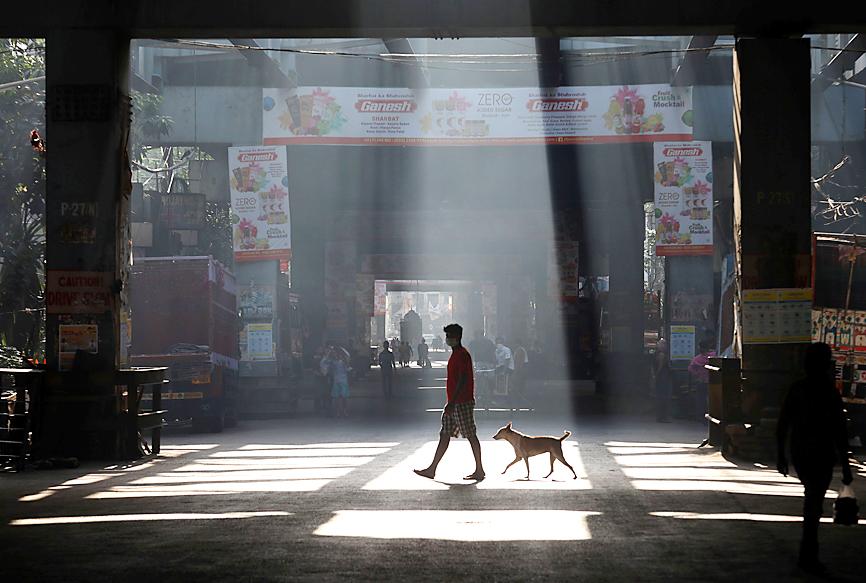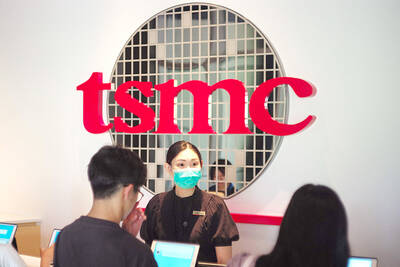The Reserve Bank of India (RBI) cut interest rates and announced steps to boost liquidity in a stimulus worth 3.2 percent of gross domestic product to counter the economic effects of the coronavirus outbreak.
The benchmark repurchase rate was slashed by 75 basis points to 4.4 percent from 5.15 percent, bank Governor Shaktikanta Das said yesterday after an emergency meeting of the rate-setting panel. The bank also cut the cash reserve ratio, the amount of deposits lenders must set aside as reserves, by 100 basis points to 3 percent to boost liquidity.
The biggest rate cut since 2009 was accompanied by measures to boost banking system liquidity that adds up to 3.74 trillion rupees (US$50 billion), support the financial markets and smoothen volatility.

Photo: Reuters
Targeted long term repo operations of up to 1 trillion rupees and a three-month moratorium on repayment of term loans for all banks and shadow lenders starting on March 1 were part of the steps.
“A war effort has to be mounted and is being mounted to combat the virus involving conventional and unconventional measures in a continuously battle-ready mode,” Das said, adding that the rate cut is aimed at supporting economic growth for as long as is necessary and to mitigate the impact of COVID-19.
“It is worthwhile to remember tough times don’t last, only tough people and tough institutions do,” he said.
The decisions are by far the most sweeping steps by the central bank to support the economy, and came a day after relief measures worth 1.7 trillion rupees announced by Indian Minister of Finance Nirmala Sitharaman.
The bank brought forward its monetary policy committee meeting that was scheduled to start on Tuesday and in the process joined in delivering surprise actions such as those by the US Federal Reserve and other central banks to stem the economic fallout of the pandemic.
“This is RBI’s whatever it takes moment,” Anand Rathi Shares & Stock Brokers chief economist Sujan Hajra said. “This would not necessarily promote growth but avert a collapse, so a big positive.”
The yields on benchmark 10-year bonds fell as low 5.98 percent, the lowest since 2009, after the RBI’s steps. The rupee advanced 1 percent against the US dollar to 74.44, while the nation’s stocks fell after rising as much as 3.4 percent initially with the S&P BSE SENSEX down 0.4 percent and the NSE NIFTY down 0.9 percent.

Taiwan Transport and Storage Corp (TTS, 台灣通運倉儲) yesterday unveiled its first electric tractor unit — manufactured by Volvo Trucks — in a ceremony in Taipei, and said the unit would soon be used to transport cement produced by Taiwan Cement Corp (TCC, 台灣水泥). Both TTS and TCC belong to TCC International Holdings Ltd (台泥國際集團). With the electric tractor unit, the Taipei-based cement firm would become the first in Taiwan to use electric vehicles to transport construction materials. TTS chairman Koo Kung-yi (辜公怡), Volvo Trucks vice president of sales and marketing Johan Selven, TCC president Roman Cheng (程耀輝) and Taikoo Motors Group

Among the rows of vibrators, rubber torsos and leather harnesses at a Chinese sex toys exhibition in Shanghai this weekend, the beginnings of an artificial intelligence (AI)-driven shift in the industry quietly pulsed. China manufactures about 70 percent of the world’s sex toys, most of it the “hardware” on display at the fair — whether that be technicolor tentacled dildos or hyper-realistic personalized silicone dolls. Yet smart toys have been rising in popularity for some time. Many major European and US brands already offer tech-enhanced products that can enable long-distance love, monitor well-being and even bring people one step closer to

RECORD-BREAKING: TSMC’s net profit last quarter beat market expectations by expanding 8.9% and it was the best first-quarter profit in the chipmaker’s history Taiwan Semiconductor Manufacturing Co (TSMC, 台積電), which counts Nvidia Corp as a key customer, yesterday said that artificial intelligence (AI) server chip revenue is set to more than double this year from last year amid rising demand. The chipmaker expects the growth momentum to continue in the next five years with an annual compound growth rate of 50 percent, TSMC chief executive officer C.C. Wei (魏哲家) told investors yesterday. By 2028, AI chips’ contribution to revenue would climb to about 20 percent from a percentage in the low teens, Wei said. “Almost all the AI innovators are working with TSMC to address the

Malaysia’s leader yesterday announced plans to build a massive semiconductor design park, aiming to boost the Southeast Asian nation’s role in the global chip industry. A prominent player in the semiconductor industry for decades, Malaysia accounts for an estimated 13 percent of global back-end manufacturing, according to German tech giant Bosch. Now it wants to go beyond production and emerge as a chip design powerhouse too, Malaysian Prime Minister Anwar Ibrahim said. “I am pleased to announce the largest IC (integrated circuit) Design Park in Southeast Asia, that will house world-class anchor tenants and collaborate with global companies such as Arm [Holdings PLC],”